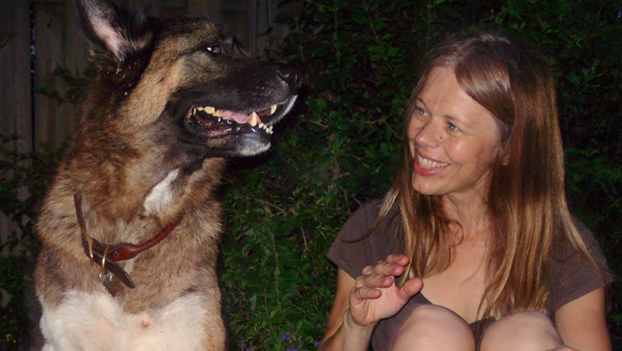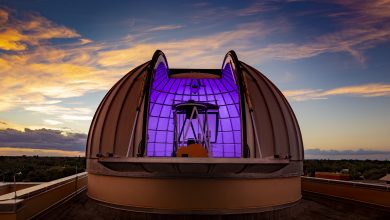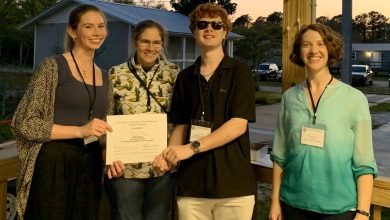Researchers Doggedly Investigate What Canines See
by Karen Rhine via the Florida Tech Today
As a national research university, Florida Tech conducts studies with a range and a depth that one might expect. One might not anticipate, however, the variety of experiments capturing the attention of researchers.
In the On Campus section, for example, is a story about collaborative research between biological sciences and psychology that involves training snakes via thermal/infrared signals to push buttons for food.
Another experimental psychologist created a project that involved the animal kingdom. It allowed her to justify what many of us would like to do: take our pet to work. G. Susanne Bahr, bringing her Akita named Yogi into her research, asked the question: What do dogs see that catches their attention? She and other researchers in Florida Tech’s Cognition Applied Research Laboratory (CARL) are working to find the answer. They usually conduct their eye-tracking research with humans, but they made an exception and invited a group of dogs and their owners to the lab. As a result, CARL is the first lab in the world to eye-track canines.
“Our dogs watch TV, scan the backyard for small and large intruders and look out windows to fixate on their departing or arriving owners,” said Bahr, director of CARL and Florida Tech associate professor of psychology. “Would it not be great to know exactly what they’re looking at?” So, she thought, “Let’s take the pooches to the lab and see if we can track their eye movements.”
Bahr earned a doctoral degree in experimental psychology with a specialty in human cognition. Her work is the first documented dog eye-tracking ever conducted.
With researchers Edward Griffith, D.V.M., owner of Lake Jessup Animal Hospital in Winter Springs, Fla., and psychology undergraduate student Ashley Catlin, Barr worked and played with four dogs to run a proof of concept study, which means they didn’t know what was going to happen. Open to the experiment were Yogi; Harley, a St. Bernard puppy; Zack, an Australian Shepherd; and Berkley, a black Labrador.
The lab’s eye-tracking equipment is called FaceLab. FaceLab uses two cameras that capture separate views of the participant’s face and processes images of the eye area, namely, the iris and pupil. Much computation and calibration are involved as a person (or a dog) sits at the computer, looks at the monitor and the world around, while the eyes are being tracked.
The university head carpenter built a versatile experimental table to accommodate the equipment, the experimenter and the dog. Canines were controlled only by gentle posture corrections made by their owners. Dog treats were used to enhance participant compliance and redirect their attention; during the experimental session the dogs, not unlike human participants, tended to become bored and tired.
The researchers successfully tracked canine head and eye movements for three of four dogs. What is the value of further research?
“It’s early days,” said Bahr. “Still, some applications are obvious, such as the qualification and annual requalification of seeing eye dogs, cataract diagnosis, and visual canine attention and aggressive behavior prediction.” Bahr adds with a small smile, “Also, we think of research and development of television ads for canine viewers.”
The team now ponders possible refinements to their approach.
For example, they might facilitate the research by restraining dog movement through a humanely designed crate. Or they may limit their sample to sedate, large breeds. These breeds may fatigue quickly but are highly compliant, calm and sized appropriately for the apparatus.
The team contemplates improvements. “In our future work we want to provide gaze accuracy validation and correction, and develop stimuli that uniquely appeal to canine participants,” said Bahr.
Other ongoing projects at CARL include attention and body language during human computer interaction, security decisions and attention to pop-ups, complexity and visualizations, and Alzheimer’s and art perception.
CARL is also networked with the Center for International Research Collaboration on Universal Access (CIRCUA) at the University of Middlesex in London, United Kingdom, where Bahr is the executive center head. CIRCUA will have a major presence in Orlando in summer 2011 at the Human Computer Interaction International Conference as 16 papers on universal access were selected for presentation and publication. CIRCUA scholars worldwide will attend—from Japan, Israel, Austria, Croatia, Cyprus, Germany, United Arab Emirates, the U.K. and U.S.





